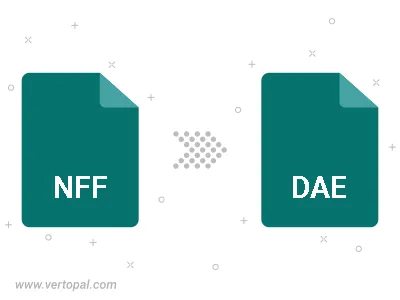Convert NFF to DAE
Convert NFF 3D models to DAE format, edit and optimize 3D models online and free.

The Neutral File Format (NFF) is a minimal scene description language used in computer graphics for testing rendering algorithms and efficiency schemes. Developed in the 1990s, NFF provides a structured way to define 3D geometric objects, surface properties, lighting placement, and viewing angles. It is primarily utilized in ray tracing applications and procedural databases, enabling interoperability between different rendering systems. While originally designed for algorithm evaluation, NFF has influenced the development of more advanced scene description formats. Its simplicity and ASCII-based structure make it a practical choice for quick data exchange in 3D modeling environments.
The DAE file extension stands for Digital Asset Exchange, a format used for exchanging 3D digital assets between various graphics programs. Developed by Sony and now managed by the Khronos Group, DAE files are based on the COLLADA XML schema and are widely supported by software like Autodesk Maya, Blender, and Adobe Photoshop. This format facilitates interoperability among different 3D modeling and animation tools, making it a standard in the industry.
Click Choose File and pick the NFF 3D model required for conversion.
Select tools to convert your NFF 3D model into a DAE 3D model, then click Convert.
Download your DAE 3D model once the conversion process is complete.

Vertopal CLI enables structured conversion from NFF 3D model to DAE 3D model.